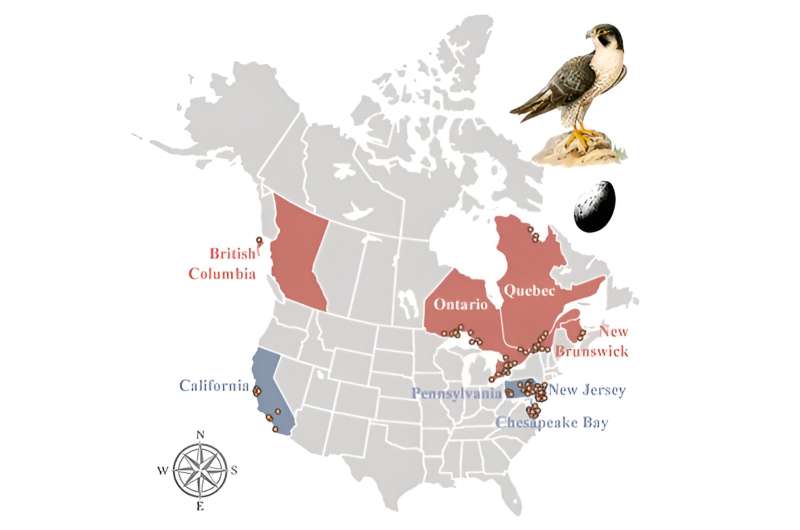
Peregrine falcon populations across North America are heavily contaminated with harmful flame retardants–including those that have been phased out for years—according to a new study published in Environmental Science & Technology.
Flame retardants are chemicals added to furniture, electronics, and other everyday products to meet flammability standards, though they often do not work as intended. They also migrate out of products they are added to and end up in wildlife and people and many are linked to serious health and environmental harms.
“Our results expose the long-term consequences of adding flame retardants to consumer products,” said senior author Da Chen, a scientist at Jinan University.
“As globally distributed apex predators, the peregrine falcon is the ideal canary in the coal mine for monitoring flame retardant pollution in the environment. Flame retardants phased out a decade ago are still accumulating in these birds and into their eggs, which indicates that the threats of these chemicals to wildlife and people can far outlast their production.”
Peregrine falcons are far from the only species polluted by flame retardants. Last year the Green Science Policy Institute released a map of more than 150 species of wild animals across every continent contaminated with old and new flame retardant chemicals. Polluted wildlife included killer whales, red pandas, chimpanzees and other endangered species.